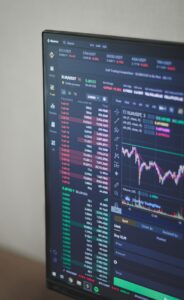The foreign exchange (forex) market is the largest financial market in the world, with trillions of dollars traded on a daily basis. Over the years, technological advancements have revolutionized the way trading is conducted in the forex market. One such advancement is the emergence of algorithmic trading, also known as algo trading, which has gained significant popularity among traders and investors.
Algo trading involves the use of computer programs and algorithms to execute trades in the forex market. These algorithms are designed to analyze market data, identify trading opportunities, and execute trades automatically, without human intervention. Algo trading has several advantages over traditional manual trading, including increased speed, accuracy, and the ability to process large amounts of data in real-time.
As we enter 2021 and beyond, the future of algo trading forex looks promising, with several trends and predictions that are likely to shape the industry. In this article, we will explore some of these trends and predictions.
1. Artificial Intelligence and Machine Learning: Artificial intelligence (AI) and machine learning (ML) are expected to play a crucial role in the future of algo trading forex. AI and ML algorithms can analyze vast amounts of data and identify patterns and trends that may not be visible to human traders. These algorithms can adapt and learn from past data, improving their performance over time. As AI and ML technologies continue to advance, we can expect to see more sophisticated and intelligent trading algorithms being developed.
2. Big Data Analytics: The forex market generates an enormous amount of data every second, including price movements, economic indicators, news releases, and social media sentiment. Big data analytics can help traders make sense of this vast amount of data and extract valuable insights. By analyzing historical data, big data analytics algorithms can identify patterns and correlations that can be used to predict future market movements. As the availability of data continues to increase and technology improves, big data analytics will become an essential tool for algo traders.
3. High-Frequency Trading: High-frequency trading (HFT) is a type of algo trading that involves executing a large number of trades in fractions of a second. HFT relies on ultra-fast computers and high-speed internet connections to exploit small price discrepancies in the market. HFT has become increasingly popular in recent years, with many large financial institutions and hedge funds using this strategy. In the future, we can expect HFT to become even more prevalent, as technology continues to advance and trading platforms become faster and more efficient.
4. Robo-Advisors: Robo-advisors are automated investment platforms that use algorithms to manage clients’ portfolios. These platforms offer personalized investment advice and can automatically execute trades on behalf of their clients. While robo-advisors are already widely used in the stock market, their adoption in the forex market is still relatively low. However, as investors become more comfortable with algorithmic trading and as the benefits of robo-advisors become more apparent, we can expect to see an increase in the use of these platforms in forex trading.
5. Regulatory Challenges: The rise of algo trading in the forex market has raised several regulatory challenges. Regulators are concerned about the potential risks associated with algo trading, such as market manipulation and systemic failures. As a result, we can expect to see increased regulation and oversight of algo trading activities in the future. This may include stricter rules on algorithmic trading strategies, increased reporting requirements, and the implementation of circuit breakers to prevent excessive volatility in the market.
In conclusion, the future of algo trading forex looks promising, with several trends and predictions that are likely to shape the industry. The use of artificial intelligence and machine learning, big data analytics, high-frequency trading, robo-advisors, and increased regulation are all expected to play a significant role in the future of algo trading. As technology continues to advance and traders become more comfortable with algorithmic trading, we can expect to see further growth and innovation in this field.





